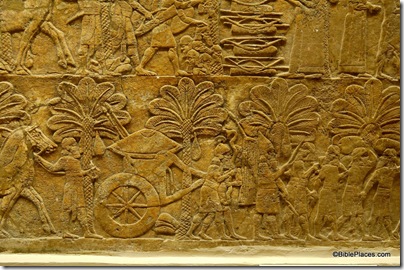Everyone knows the story of David and Goliath. Many are probably not aware, however, of what happened next. That was the subject of James Hoffmeier’s recent lecture at the Bible and Archaeology Fest. “Exploring David’s Strange Antics after Defeating Goliath” looked specifically at 1 Samuel 17:53-54.
1 Samuel 17:53-54 (ESV) “And the people of Israel came back from chasing the Philistines, and they plundered their camp. 54 And David took the head of the Philistine and brought it to Jerusalem, but he put his armor in his tent.”
If these verses are not baffling, remember that David had not yet conquered Jerusalem (he would do that after he became king, in 2 Samuel 5). The other difficulty here is the phrase, “he put his armor in his tent.” Presumably the “he” is David, “his armor” refers to Goliath’s gear, but whose tent is involved? Some think it is the tent of David (see the translation of the NIV), others think it is the home of David (“tent” being used elsewhere of one’s home), and an intriguing suggestion is that it is the tent of Yahweh (but that requires changing the text).
Hoffmeier’s lecture gave a tour of tents in the Ancient Near East, including those of Ramses II and Sennacherib. Kings Thutmose III and Sargon II are recorded as having plundered the tent of their enemies. Hoffmeier suggested that this statement indicates that David took Goliath’s tent and weapons back to Bethlehem.
As for Goliath’s head, did David store it in his refrigerator for a few years until he conquered Jerusalem? Probably not. While some scholars view this statement as an anachronistic error, Hoffmeier has identified a number of ancient scenes where conquerors carried off the heads of the defeated, tying them to their chariots or garden trees. Heads were often displayed as warnings to potential enemies. Perhaps, then, David had it in his mind to conquer the Jebusite stronghold already as a youth, and he took Goliath’s head to serve notice to Jerusalem that they were next.
 Assyrian relief depicting Ashurbanipal’s army after capture of Babylon, c. 650 BC. Relief now in British Museum. Notice the pile of heads in the upper center. This same king put a hook in Manasseh’s nose and hauled him off to Babylon (2 Chr 33).
Assyrian relief depicting Ashurbanipal’s army after capture of Babylon, c. 650 BC. Relief now in British Museum. Notice the pile of heads in the upper center. This same king put a hook in Manasseh’s nose and hauled him off to Babylon (2 Chr 33).
I found Hoffmeier’s lecture enjoyable and his ideas provocative. This is a difficult problem, and I find his solution preferable to the alternatives. My comments here are an unofficial record (I may have made a mistake in my note-taking), but you can read some of his findings in his article, “The
Aftermath of David’s Triumph over Goliath,” in Archaeology in the Biblical World, Spring 1991, pp. 18-23.
Hoffmeier is, of course, best known for his work in Egypt, and he has written a couple of excellent books on the subject of historical and archaeological evidence for the Israelites in Egypt:
- Israel in Egypt: The Evidence for the Authenticity of the Exodus Tradition
- Ancient Israel in Sinai: The Evidence for the Authenticity of the Wilderness Tradition
One on his works on my shelf that I have not yet had time to read is The Archaeology of the Bible, published in 2008.